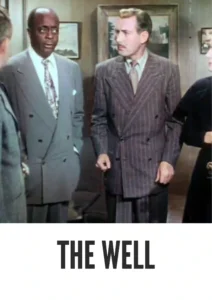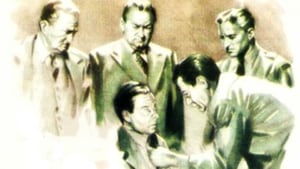Video Sources 0 Views

Download The Well (1951) Colorized HD | Harry Morgan | Gripping Social Drama
Synopsis

Delve into the depths of societal anxieties with The Well, a powerful social drama from 1951, now beautifully colorized for a viewing experience that resonates with contemporary themes. This film, directed by Russell Rouse, presents a gripping narrative of racial tension and community panic when a young Black girl goes missing. Perfect for viewers interested in thought-provoking cinema and those who appreciate stories that reflect on social issues, this HD download brings a historically significant and emotionally charged film to your screen.
The Well unfolds in a small town gripped by fear and suspicion when a young African American girl disappears. The initial assumption quickly turns to blaming the white community, igniting deep-seated racial tensions that threaten to tear the town apart. As the search intensifies, suspicion falls on a white man with a questionable past, further inflaming the situation.
Sheriff Ben Kellogg (Richard Rober), a man of integrity, struggles to maintain order and calm the escalating hostility between the town’s Black and white residents. Mace (Harry Morgan), a determined construction foreman, aids in the search, and together, they navigate the racially charged atmosphere, battling against time and prejudice to find the missing child. The film masterfully portrays how a single incident can expose the underlying prejudices within a community, highlighting the urgent need for understanding and unity. The climax reveals a surprising twist, forcing the town to confront its biases and work together to save the girl, making The Well a compelling commentary on race relations and human nature.
The film features a stellar cast of actors who deliver powerful performances:
-
Harry Morgan as Mace
-
Richard Rober as Sheriff Ben Kellogg
-
Maidie Norman as Mrs. Crawford
-
Christine Larson as Carolyn Crawford
-
Barry Kelley as Claude Packard
The Well firmly resides in the genre of social drama, enriched with elements of suspense and thriller. It serves as a stark commentary on racial prejudice and societal dynamics, making it a relevant and impactful cinematic experience.
Released in 1951, The Well mirrors the social anxieties and racial tensions prevalent in post-World War II America. During this period, the Civil Rights Movement was gaining momentum, and films like The Well began to address issues of racial inequality and prejudice, prompting audiences to reflect on the pervasive injustices within their communities. The film’s daring exploration of these sensitive topics marked a significant moment in cinematic history, solidifying its place as a powerful piece of social commentary. The Well is also known under the titles “The Hole” and “One Way Street“.
This colorized version of The Well has been meticulously restored, employing cutting-edge digital techniques to enrich the visual experience while carefully preserving the film’s original atmosphere and emotional depth. The colorization process involved a detailed analysis of the original black and white footage, with skilled artists and technicians assigning appropriate colors to each scene to enhance the storytelling. Sophisticated algorithms were utilized for color palette selection and image enhancement, ensuring that the colorization adds to the film’s impact without compromising its historical integrity. This painstaking process breathes new life into the characters and settings, making the narrative even more immersive and engaging for contemporary viewers.
-
: Russell Rouse
-
: Russell Rouse, Clarence Greene
-
: Russell Rouse, Clarence Greene
-
: Ernest Laszlo
-
: Chester W. Schaeffer
-
: Harry M. Popkin Productions
-
: United Artists
-
: 85 minutes
-
: MP4
-
: HD (1080p)
-
: Compatible with a wide range of devices, including smartphones, tablets, computers, and smart TVs.
The Well (1951) garnered critical acclaim for its bold exploration of racial tensions and its gripping narrative. It has been praised for its powerful performances, realistic portrayal of societal issues, and its ability to provoke thought and discussion about prejudice and justice. As a significant work of social commentary, The Well remains a relevant and impactful film that continues to resonate with audiences today.
-
: What is The Well about?
-
A: The Well is a social drama centered on the racial tensions that erupt in a small town when a young Black girl goes missing.
-
-
: Is The Well (1951) a well-known film?
-
A: While not as widely known as some other films of its era, The Well is recognized for its significant contribution to social commentary in cinema.
-
-
: Is this version of The Well colorized?
-
A: Yes, this version has been professionally colorized to enhance the viewing experience and introduce the film to a broader audience.
-
-
: What makes The Well important?
-
A: The Well is important for its courageous exploration of racial prejudice and its insightful portrayal of community dynamics in post-war America.
-
-
: What is the download format?
-
A: The download format is MP4, ensuring compatibility with most devices.
-
-
: What resolution is the download?
-
A: The resolution is HD (1080p), providing a high-quality viewing experience.
-
Watch The Well Today!







